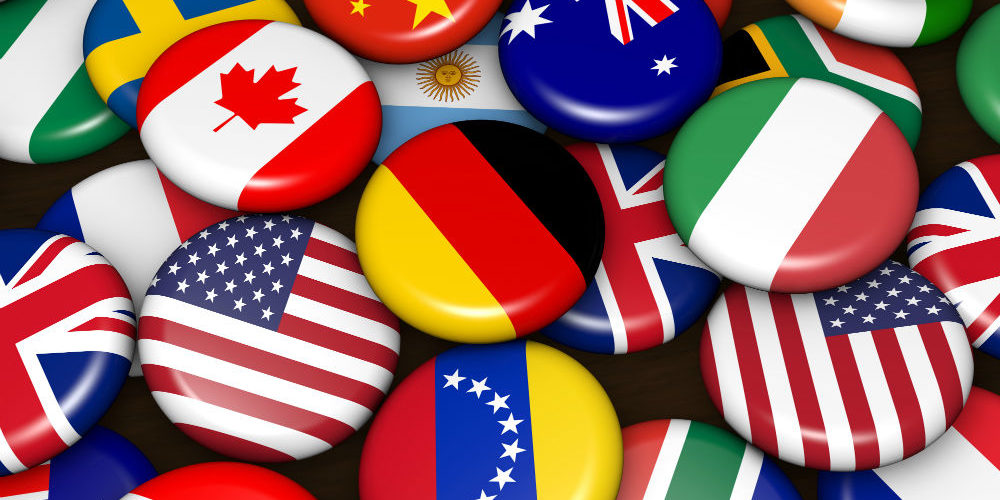Once you’ve decided to adopt, there will be so many different and wonderful avenues ahead of you. Choosing a path that fits your family can be overwhelming, but a well-chosen agency will be able to guide you. Yet, before you embark on getting your dossier ready to send overseas, there are some things you should know about international adoption to make sure that adopting a child from another country is a good fit for your family.
1. Your country choice will guide your entire journey.
Each country has very specific requirements for adoptive parents. Many of those requirements center around age, length of marriage, and number of children already in your home. Some countries have additional medical limitations while others have specific rules about the ages of the children already in your home. Beyond the household rules, there are additional requirements per country for your home study and dossier. Some countries require psychological evaluations for everyone in the home, but others do not. Your country choice will also determine what your journey will look like; while some countries have referral programs, others have waiting children lists to choose from. Whatever country’s requirements match your family’s situation, that country will set up the rest of your adoption journey schedule for you.
2. The cost of plane tickets may be your most expensive fee.
When you adopt internationally, your bills will look very different from those adopting domestically. Your fees will include things like translation services, legal representation in country, NGO services, food while traveling, and plane tickets. And, though each fee is a little more painful than the last, the plane tickets will often be your biggest sum (and you most likely won’t have a lot of turnaround time to fundraise for them).
3. You will need to prepare yourself linguistically and culturally.
Adopting internationally means that you now have a child who was born into a different culture, speaking a different language. Even if your child looks like you on the outside, there may be significant culture differences that you will encounter within the first few months home. Familiarizing yourself with your country’s cultural practices and traditions and learning some key words and phrases in the native tongue of your new child will help ease your transition into a forever family. Your child may have food preferences (e.g. preferring meats and cheeses if born in an eastern European country), personal space variations, style preferences, etc. Though some of those things may be different due to being raised in an institution, learning the cultural nuances of your child’s birth country will help ease the transition. Learning a few linguistic phrases will help you communicate during those first few difficult months; it will help you keep the child safe, teach him or her to communicate with you, and help establish a healthy bond from the start.
4. Limiting your welcoming committee will help your attachment relationship.
When you adopt, there is often a period of time called “cocooning” after you bring your child home that agencies and social workers will strongly suggest you utilize. Limiting who comes into contact with your new addition will positively impact your attachment relationship right after you come home. Your child will probably not fully understand what has happened or what his or her new role is within your family. The concept of “mom” and “dad” will be difficult to grasp, so limiting who welcomes you home off the airplane to immediate family and grandparents will set you up for deeper understanding of your new parent-child relationship. And, although it may be difficult to tell Aunt Sally that she can’t meet your new child at the airport, it may really help set the stage for attachment success.
5. Your journey may feel like a marathon with the last few months feeling like a sprint.
Many international adoption routes involve long wait times. Even if you are open to special needs or older children, if you are going more of a traditional route where you wait for a match from the government/adoption committee in your country of choice, then you may be waiting longer than you wish you had to. From the time you submit your initial screening application to your agency to the time you are matched with your child, there may be anywhere from weeks to months (depending on country choice and child parameters). Once you are matched, the process often speeds up, and you will be on an airplane with a frightened toddler before you know it. So, fundraise, gather paperwork, set up the new bedroom while you have the chance, because once you have a picture of the child’s face, the whole world seems to speed up, and there won’t be enough minutes in the day.
6. You will now cheer for two countries during the Olympics.
Though your patriotism for the USA may run deep, you are now forever connected to a new place. Even if your child does not have fond memories or a positive experience from the orphanage, or if you are having to limit contact with foster parents from across the sea, the culture, traditions, and heritage of that country are in the blood of your new child. Teaching him or her to love and appreciate heritage may look like you cheering for the birth country’s Olympic team. So, fly that American flag high, and proudly fly the other country’s flag right below it.
Navigating international adoption can be tricky. You are dealing with multiple languages, plane tickets, maps, and foreign food. You may be caught off guard by your NGO interpreter or not understand why your new child keeps eating soup with his or her hands. You may not understand why the government wants you to submit your fingerprints for the fourth time this year or why your country choice seems to be more unstable than your other options. But, know that your child will be well worth the battle.
Are you and your partner ready to start the adoption process? Visit Adoption.org or call 1-800-ADOPT-98 to begin your adoption journey. We have 130+ years of adoption experience and would love to help you.




